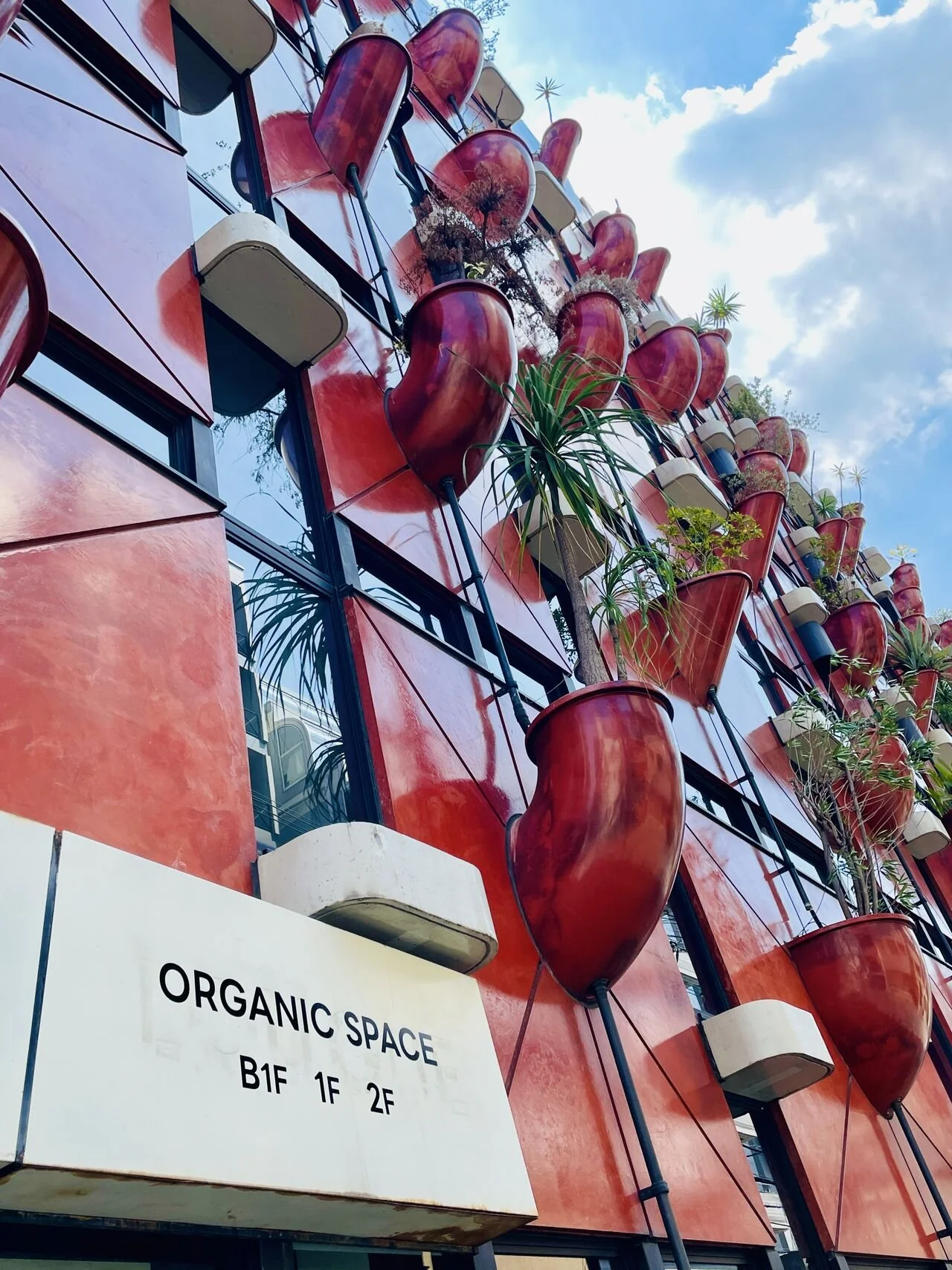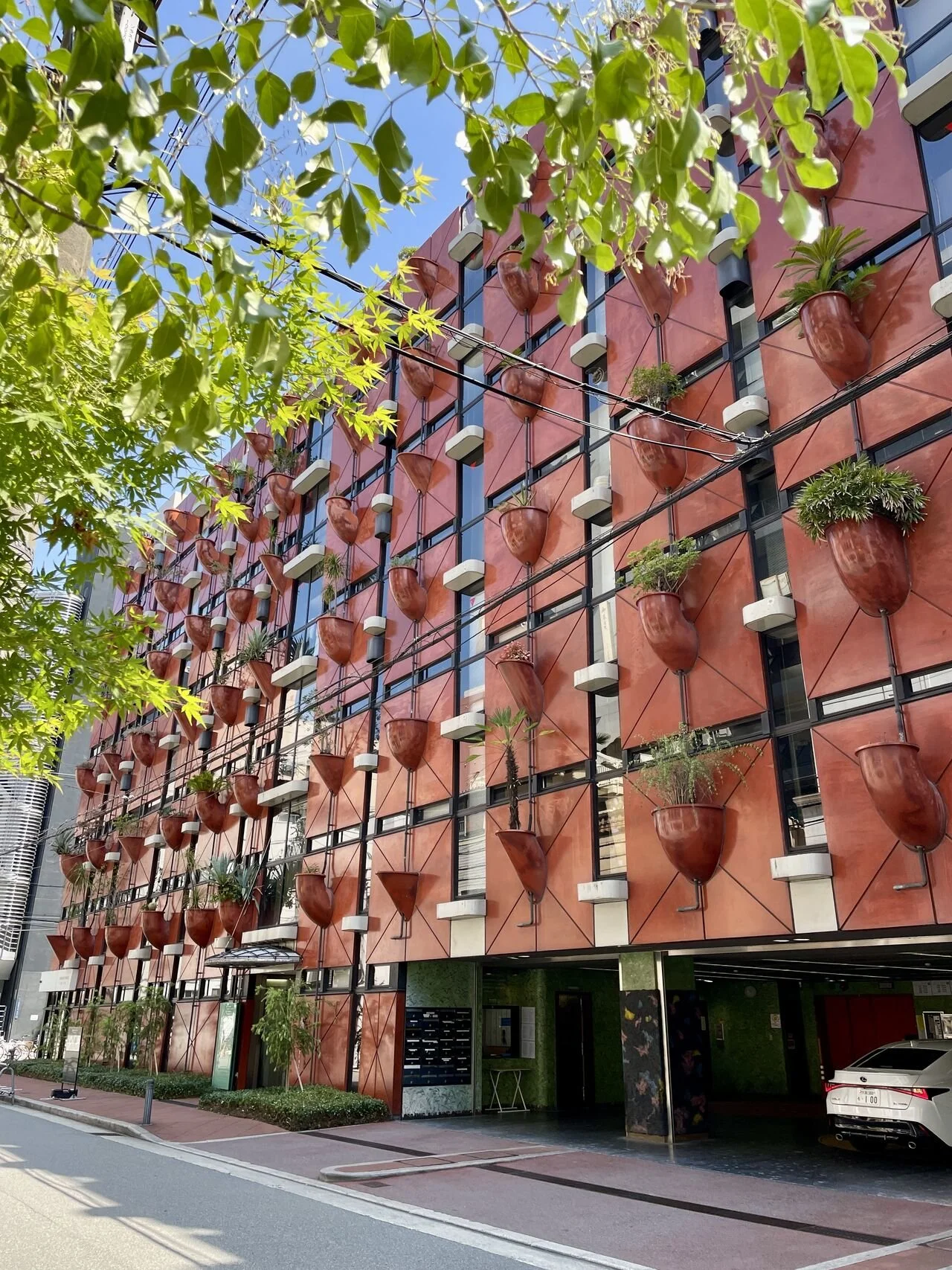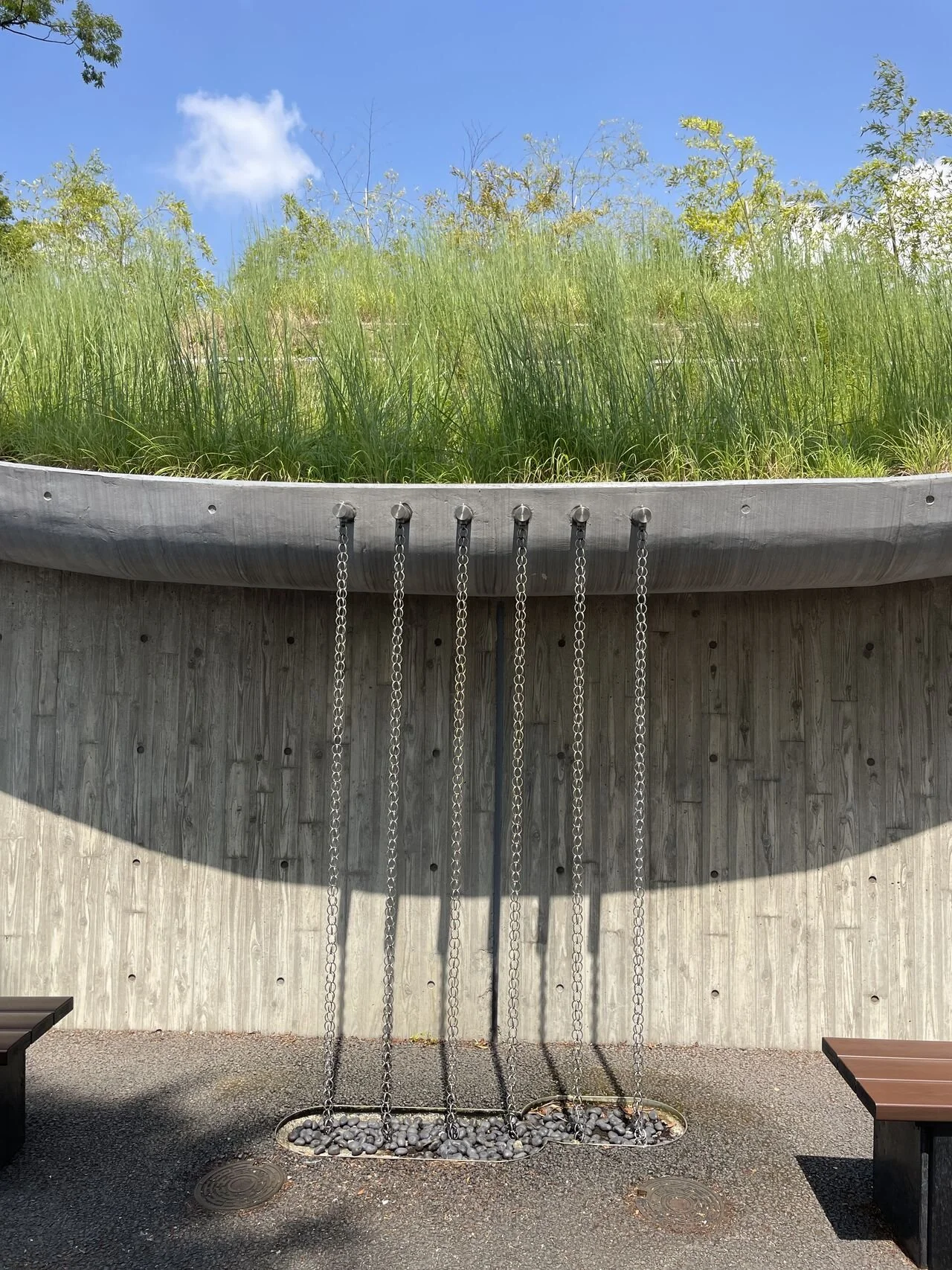The Hidden Cost of Design in a Hurry: Dr. Fiona Gray on Building for Wellbeing
Published by The Biophilic Blueprint | Written by Anjelica Smilovitis, Founder
Dr. Fiona Gray, regenerative architecture consultant and founder of BioLiving by Design, Victoria.
We spend a portion of our lives inside buildings—working, learning, sleeping, living. But how often do we stop to ask: is this place making me feel well?
Sometimes, the signs are hard to ignore: mould creeping across a ceiling, or recycled air that leaves us foggy by mid-afternoon. But often, the impact is subtler—the chemicals in the materials around us, the way light hits a room, or the absence of fresh airflow that our bodies instinctively crave.
The way we design and build our cities, it turns out, can profoundly shape our physical and mental wellbeing—and hurried design and construction that overlooks this can create spaces that compromise human health. From materials we barely understand to buildings “plonked” onto sites with a sense of sameness, the culture of speed and efficiency may seem sufficient for now—but what about the lifespan of those places? And what about the people who inhabit them?
Growing research shows that many urban environments fail to support human health—and in some cases, actively harm it (Makaremi et al., 2025). At the heart of it is a deeper cultural assumption: fast is necessary. But while a deadline may be met, the toll on people and the planet is quietly deferred.
With more people living and working in cities, the design of our urban environments matters more than ever. Over half the world’s population lives in urban areas, and the United Nations predicts the figure will rise to nearly two-thirds by 2050 (Valentine C., 2024).
The Biophilic Blueprint sat down with Dr. Fiona Gray to look deeper at how buildings influence our mental and physical wellbeing, and the hidden costs of urgency in the built environment—with history our teacher. Through the lens of regenerative architecture design, we also explore whether sustainability is truly the way forward—or whether it’s keeping us stuck in a loop, where boxes are ticked but mindsets and methods remain unchanged.
Gray is a registered architect who founded Bioliving by Design in Victoria to enhance wellbeing in homes, schools and workplaces through biophilic design and Building Biology principles. Her consultancy offers expert advice on creating environments that harmonise with nature and elevate human health. With a career spanning decades in architecture, her early practice revealed a stark contrast between conventional building approaches and what she now defines as truly healthy design.
She is a new author of the book Gretel Petal and the Blooming City—and a Co-Chair of the Biophilic Design Advisory Panel at the Living Future Institute of Australia. Beyond architecture, Gray is an avid hiker and explorer—passions that inspire her connection to natural environments and inform her approach to regenerative design.
Photos: The ‘Organic Building' in Osaka, Japan complete in 1993, The guiding concept is "co-existence of greenery, architecture, and human beings." Its façade is covered with 132 deep planters, nurturing over 50 plant species from around the world. Courtesy of Fiona Gray.
From Traditional Architecture to Regenerative Design
Following a long career in traditional architecture, Gray shifted her focus toward the emerging field of Building Biology and the regenerative principles reshaping how we think about the built environment. Drawn instinctively toward regenerative, soul-centred design, Gray describes herself as a “neo-generalist”—someone who has explored diverse paths to find her purpose in nurturing both people and the planet.
From conventional architecture through academia and into local government, she continually felt compelled toward design approaches that give back to humans and the environment.
“It’s almost like I had an existential crisis—realising I can’t be an architect, because I can’t keep building the way we build,” Gray tells The Biophilic Blueprint. “I love architecture; I think it’s amazing. But recognising there’s another way, and choosing to champion that, feels like a worthwhile thing to do.”
Leaving the corporate architecture world behind, Gray pursued a PhD focusing on “organic architecture” and the philosophy behind the movement. She asked herself why organic architecture never gained the same traction as the minimalist modernist aesthetic.
This curiosity led her to explore regenerative thinking through the Living Future Accreditation, where she uncovered what had been missing in the traditional architecture world she knew.
“I enjoyed the fact that you could bring nature back into our built environments,” Gray explains. She said research increasingly shows how exposure to greenery, natural light and fresh air supports circadian rhythms and mental health.
Gray’s interest in healthy buildings deepened when she completed a Building Biology course—and she now asks whether we are repeating the same mistakes of the past.
“Building Biology was developed in the post-war period in Germany, when there was this absolute proliferation of new buildings because there was a need,” she says. “It was quick construction with unhealthy materials—new industrialised materials—that we knew precious little about in terms of the chemicals.”
“Suddenly, this phenomenon of ‘sick building syndrome’ started to appear,” Gray said.
She explains how this period prompted health professionals and architects to collaborate, investigating how buildings affected people. This work led to the development of 25 principles that align with sustainable architecture but go further, focusing on human health. “I studied it, and I try to apply those principles in the work that I do,” she said.
Often brought in by clients rather than architects, Gray focuses on health and regenerative design—areas where she’s developed deep expertise that complements, rather than competes with, the architect’s vision. She noted that while architects frequently engage with sustainability, the conversation often limits at regenerative architecture—”a step beyond”.
“I consult quite a bit on materials and how people might tweak their specifications for building healthier buildings,” she explains. “Most of the architects I work with are open to the potential of regenerative architecture to change the way we build.”
“Sustainability is Dead”: The Call for Regenerative Design
Sustainability may have been a stepping stone in caring for the planet, but Gray questions whether it has become a checklist for doing “a little less harm,” rather than a guide for creating spaces that truly nurture both people and the environment.
To Gray, sustainability has too often become about maintenance—about not doing worse—rather than designing places that actively restore, nurture and give back to both people and planet.
“I wrote a post on LinkedIn that got a really strong reaction,” she recalls. “I said, ‘sustainability is dead.’” The conversation sparked healthy debate, though the usual unhelpful comments made their appearance too.
Gray explains her stance: “Regenerative sets a much higher bar—it’s about making a positive impact, not just a less bad one. It moves beyond just being sustainable—it’s about giving back something positive.
“Even with architects doing the best they can, buildings still take more than they give. If we’re sustaining a system that’s already extractive, then we can’t keep going at that rate indefinitely,” Gray explains.
“When a system is built for speed it becomes destructive. Things that are fast are often highly industrialised processes. That’s how it became fast.”
In addition, Gray notes how much attention goes toward more developments but overlooks destruction overall—destroying forests, ecosystems, even the little micro-ecosystem where the building stands—which not only impacts the environment but human lives.
The Hidden Impact of Buildings on Mental and Physical Health
Gray’s consultancy work has taken her into the education space to support children’s wellbeing, driven by her belief in the profound impact of buildings on mental and physical health. Her personal experience as a parent of children with severe, life-threatening allergies has only deepened this interest, she said.
“Right now, a lot of my work is with schools,” Gray explains. “Schools that are looking to connect their kids more with nature.”
“The statistics around young people presenting with mental health challenges and at later stages with serious conditions are alarming,” Gray notes. “I’m not suggesting for a second that the built environment is the answer, but it is part of the answer.”
A short read called Healthy Schools Need Healthy Air highlights how indoor air quality directly affects children’s health and learning. The piece underscores that poor ventilation, stale air and harmful building materials can hinder wellbeing—and that improving these factors is essential for creating truly healthy schools.
Gray points to the tension between energy efficiency and interior wellbeing as an example of the challenges in creating truly healthy buildings.
“Sitting in a tightly air-conditioned space with fluorescent lighting all day and no access to a view, even a shrub, can impact your mental health,” she said. “More and more people are getting sick from mould illness, and there’s an exponential increase in children with asthma, eczema and allergies. Our buildings are full of chemicals,” Gray said. Furthermore, she noted that we understand only a fraction of the long-term impact.
“There’s a fine balance between creating hermetically sealed buildings … and ensuring proper ventilation to prevent condensation, mould, and poor indoor air quality,” she explains. “It requires quite a deep knowledge of building science to get that stuff right.”
Gray’s deep expertise in regenerative architecture allows her to guide both architects and clients through the complexities of designing with human health and environmental systems in mind. By drawing on her specialised knowledge of materials, airflow, lighting and broader ecological impacts, she helps clients understand why slowing down the process and prioritising quality can create buildings that truly support wellbeing.
“There’s a big responsibility on an architect—who wants to slow down the process to deliver a quality product—to educate their client. This will pay itself off tenfold, potentially. But if the client doesn’t understand that, it’s going to be a hard sell.”
Sometimes, working regeneratively or embracing “slow” architecture means turning away clients, Gray says.
“The hurrier I go, the behinder I get,” she quotes, reflecting on the tension between speed and care. “While time is money,” she says pointing out the commonly used phrase, “…there is also an economic cost to doing things poorly—and an environmental cost, a social cost…they’re real costs.”
“If you are committed to this way of working and to a truly regenerative way of working, it sometimes means saying no to clients, because your values and your approach will be compromised. But that doesn’t mean you shouldn’t try.”
Gray says she has mostly found a community of like-minded people who share her vision. “Once you find other people that are singing from the same hymn book, it just restores a bit of faith,” she says.
“The slow movement is not about doing everything at a snail’s pace. Nor is it a Luddite attempt to drag the whole planet back to some pre-industrial utopia. The movement is made up of people who want to live better in a fast-paced, modern world. The slow philosophy can be summed up in a single word: balance.”
Slow Architecture: Fighting the Culture of Speed
Examining the mindset behind a culture driven by speed and haste isn’t about placing blame—it’s an invitation to reflect, pause and learn from our history and mistakes. It’s a call that resonates in architecture, but also in life. How often have we rushed ahead, only to later regret decisions made in haste because of their long-term consequences?
Gray authored an article titled Slow Architecture for a Fast World, offering this reflective take and an alternative perspective to today’s pace-driven culture. She observes: “We live in a culture addicted to speed: fast food, fast fashion, fast content. The economy, technology and media all reward urgency and leave little space for reflection. In this constant state of acceleration, the idea of slowing down starts to feel like a subtle act of defiance. Architecture is no exception.”
For Gray, slowing down isn’t just about timelines. It’s about creating buildings that serve people, honour ecosystems and consider the long-term consequences of every decision.
“If we look back to vernacular ways of building, that was an inherently slow way to build, but also a highly sustainable way to build,” Gray says. “I don’t wear rose-coloured glasses…we’ve got a housing crisis. We must house people. But I am concerned that we build fast and specify fast materials.”
“It might feel like it’s fixing a situation quickly now, but in the longer term, we’re going to be left with redundant building stock that doesn’t meet human needs,” Gray explains. “Not only will buildings not last, she says, in the meantime it has destroyed a whole bunch of stuff along the way. Too often, we just meet the bare minimum—if it ticks the legislative boxes, it’s deemed okay.”
Gray describes it as a “vicious cycle” but one she believes can be broken. “If humans have created industrial systems, we can do it in a way that’s more thoughtful and less destructive.”
How The Biophilic Blueprint shares the vision of healthier buildings
Dr Fiona Gray’s work and purpose aligns closely with The Biophilic Blueprint’s mission: to explore and promote spaces that nurture human wellbeing while restoring connections with nature. Slowing down in architecture can feel like a quiet act of resistance in a culture that prizes speed, but by reimagining buildings as environments that nurture health, we unlock broader social and economic value. Caring deeply about the places we build shifts the focus from simply providing shelter to nourishing life itself. It asks us a deeper question: how can we meet immediate needs without compromising the long-term health of people, ecosystems and the systems that sustain them?
Share with us in the comments: How can we better meet today’s needs without harming people, ecosystems or the systems that sustain them?
References & Further Reading
To explore Dr. Fiona Gray's work in regenerative architecture and biophilic design, visit Bioliving by Design.
Gray, F. (2025, October 15). Slow architecture for a fast world. Dwell Well. https://drfionagray.substack.com/p/slow-architecture-for-a-fast-world
Harvard Graduate School of Education. (2025, June 25). Healthy schools need healthy air. https://www.gse.harvard.edu/ideas/news/25/06/healthy-schools-need-healthy-air
Institut für Baubiologie + Nachhaltigkeit (IBN). (n.d.). 25 guiding principles of building biology. https://baubiologie.de/downloads/IBN-25GuidingPrinciples-Handout-EN.pdf
Valentine, C. (2024). Architecture and public health: From harmful designs to healthy built environments. BMJ, 387, q2773. https://www.bmj.com/content/387/bmj.q2773
Makaremi, N., Morgan, G. T., Yildirim, S., Jakubiec, J. A., Robinson, J., & Touchie, M. F. (2025). A framework for evaluating the impact of buildings on inhabitant well-being. Building and Environment, 280, 113117. https://doi.org/10.1016/j.buildenv.2025.113117






